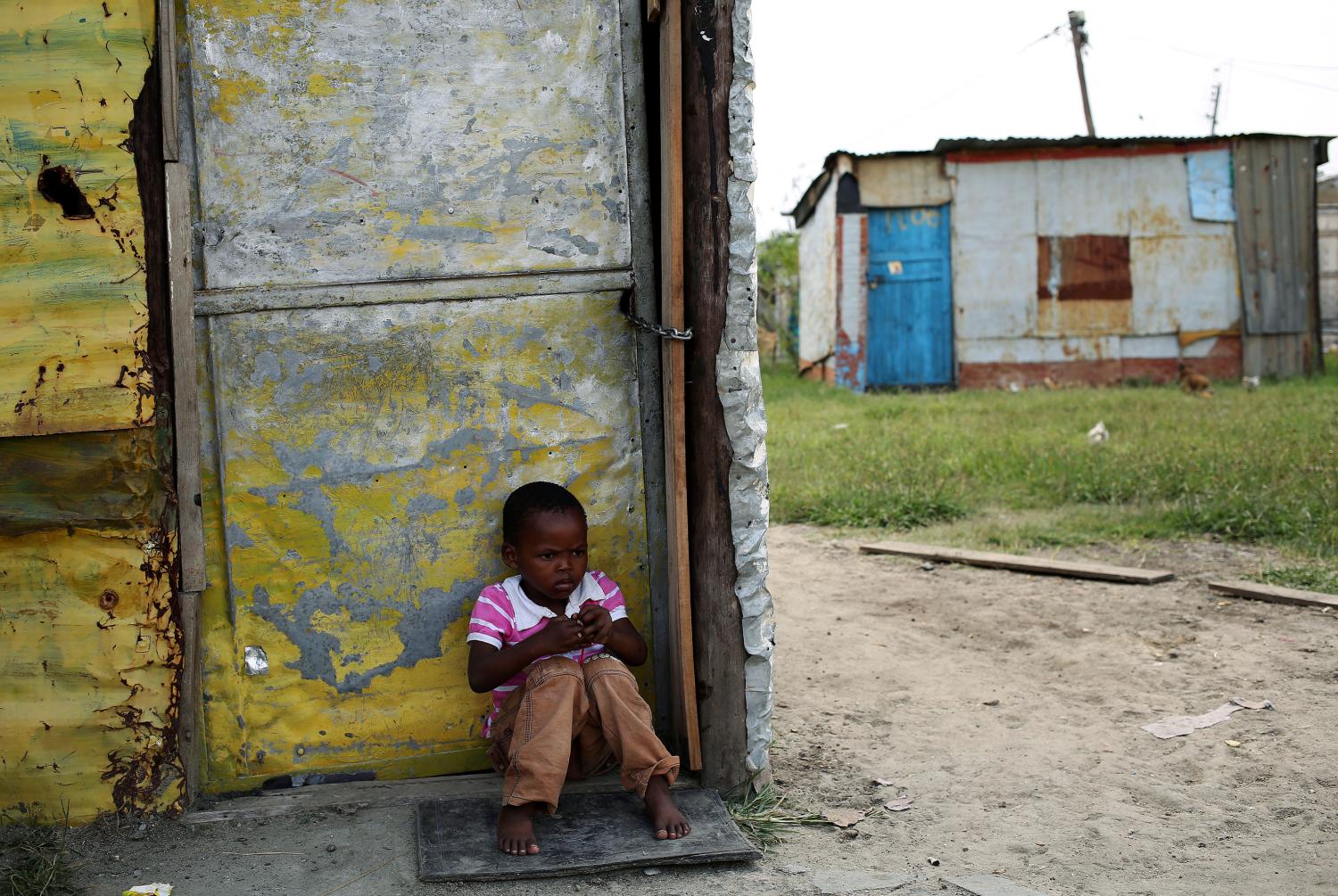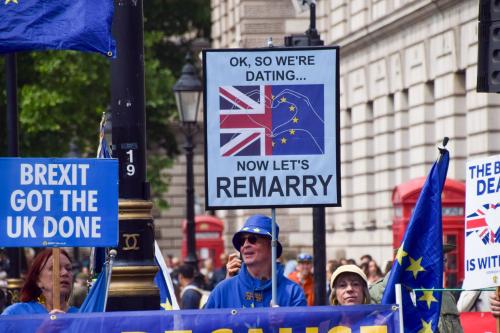This blog is the last of a four-part series highlighting themes from “
The Last Mile in Ending Extreme Poverty
,”
a book published this month by Brookings Institution Press.
India today is already richer than Germany was when it introduced social insurance for all workers in the late 1880s. Indonesia is richer than the United States was in 1935, when the Social Security Act was passed. And China is richer than Britain was in 1948, when the National Health Service was introduced. So what can we learn from comparing developing countries today to richer countries when those countries were at equivalent levels of economic development?
Although the industrial revolution had dramatic effects on poverty in today’s rich countries, the end of extreme poverty only occurred in those countries after the creation of modern welfare states in the post-World War II period. These welfare programs raised the living standards of the most destitute citizens while establishing a “social floor” that protected all members of society.
Today’s lower and middle-income countries, despite their significant progress, are actually lagging behind in their fight against poverty when compared to countries that industrialized before the 20th century. In Table 1, I’ve compared the extreme poverty rates of today’s developing countries—China, India, Indonesia, and Nigeria—to the extreme poverty rates of today’s rich countries—the United Kingdom, United States, Germany, France, Japan, Italy, and Spain—when those countries were similarly “developing.”
Table 1. Extreme poverty rates of today’s rich countries, when they were at similar levels of development (%)
Note: table compares extreme poverty rates in the four countries across the first row (2010 data, in parentheses) to those of the seven advanced, industrialized countries in the first column in the approximate year in which the per capita incomes of the matched countries were approximately equal. All rates represent the percentage of the population living below $1.25 per day in 2005 PPP-adjusted dollars. Per capita incomes used to match country pairs are also in constant 2005 PPP-adjusted dollars. Poverty rates are generated from parameterized Lorenz curves based on data from François Bourguignon and Christian Morrisson (2002), “Inequality Among World Citizens: 1820-1992,” American Economic Review 92, 4: 727-744.
Take India, for example. In 2010, India’s extreme poverty rate stood at 33 percent, and its per capita income was just above $3,000. The U.K., U.S., and Germany passed the $3,000 per capita mark in 1870s, 1890s, and early 1900s, respectively. Their extreme poverty rates in those decades were 12 percent, 10 percent, and 5 percent, respectively. A similar gap can be seen when comparing India with France, Japan, and Italy, all of which had extreme poverty rates at or below 15 percent when they were at the $3,000 per capita mark. Even Spain, which did not cross the $3,000 mark until the late 1950s, kept extreme poverty to less than half the Indian rate at the time.
One explanation—that today’s rich countries grew more “inclusively” a century ago than developing countries today—cannot be the whole story. In the first place, there is considerable variation in income inequality across low and middle-income countries. Moreover, as described by everyone from Charles Dickens to Karl Marx to Thomas Piketty, the beginnings of industrialization plunged large numbers of landless working people throughout Europe into (mostly urban) poverty. And just as today’s richer countries were transitioning from lower to upper-middle income countries, they were also experiencing peak inequities—during the “Gilded Age,” when private wealth exceeded national income and was concentrated among a small group of wealth-holders. Yet all of these countries managed to eliminate extreme poverty within a few decades.
The gap in reducing poverty is more likely due to very different trajectories of social protection. The earliest social protection programs in Western Europe were of the contributory variety—financed out of taxes on wages—as a way of preventing social conflict. Otto von Bismarck’s pension, sickness insurance, and worker compensation programs were, after all, created to pre-empt a Social Democratic victory in Germany. These systems, combined with the political changes taking place in the continent, would lead to dramatic expansions in social protection in later decades. Even as industrialization initially caused poverty, it also created rising wages for workers. Eventually, organized working classes formed a strong alliance with the fast-growing, urban middle class. This political coalition sought policies that would protect itself from economic cycles—especially after the economic turmoil of the 1920s and 1930s—that would eventually result in the postwar welfare system. Indeed, the durability of these welfare programs may be attributed to the participation of the middle class, which shaped program design: welfare programs provided universal coverage so that the middle class itself was not excluded from benefits.
Many of today’s developing countries have followed a very different path. Labor tends to be less organized and have weaker relative bargaining strength. Much of the labor force remains in the informal sector and is left out of any contributory schemes, which tend to have limited scope. Social protection is more reliant on a fragmented system consisting of a large number of non-contributory programs financed out of general revenues. More importantly, the preferences of both governments and donors are mainly for programs that target particular sub-populations to achieve cost efficiency.
Consequently, an opposite political dynamic appears to be playing out in developing countries. Instead of middle class “buy-in” resulting in broader and more comprehensive programs, targeted and fragmented programs are inhibiting median-voter support for social protection and leading to middle-class exit. The consequences are familiar to designers of targeted social protection—their vulnerability to shifts in political winds, their susceptibility to abuse or capture by elites, and their occasional failure to outlive the aid programs that may finance them.
The overall result is that the demand for comprehensive welfare programs in middle-income countries remains weak.
Of course, this may be changing as countries such as India begin to recognize the political as well as economic benefit of programs in which all citizens have a stake. Indeed, the Modi government has unveiled a universal social security program in its latest budget, perhaps recognizing that the last mile in poverty reduction is more likely to be achieved and sustained through social policies that garner broader political support by including the nonpoor as beneficiaries.
The Brookings Institution is committed to quality, independence, and impact.
We are supported by a diverse array of funders. In line with our values and policies, each Brookings publication represents the sole views of its author(s).






Commentary
Does the developing world need a welfare state to eliminate poverty? Some insights from history
July 30, 2015